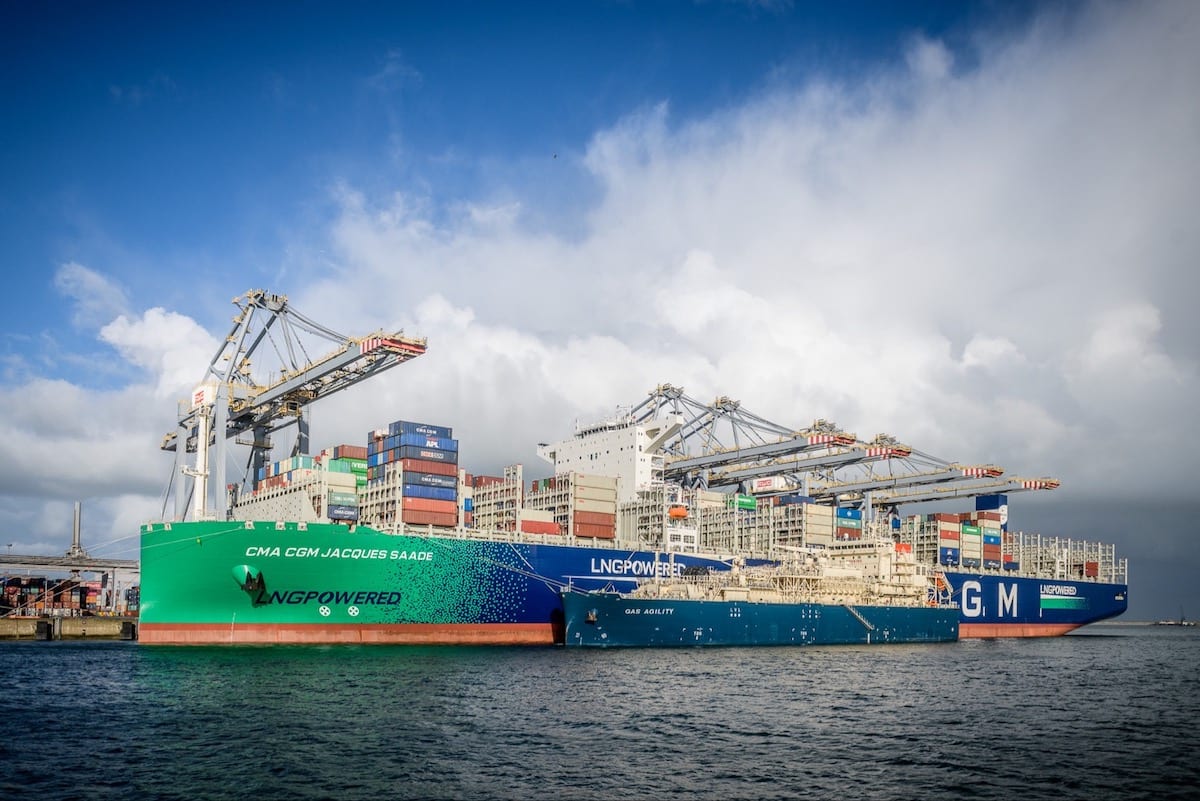Click for larger. Image courtesy Gistda
By Suttinee Yuvejwattana and Michael Sin
March 27 (Bloomberg) — Thai satellite images of more than 300 objects in the south Indian Ocean produced another lead in the hunt for Malaysian Air Flight 370, with Japanese spacecraft also locating items as bad weather halted an airborne search.
The Thai photos from March 24 show objects spanning 2 meters to 15 meters floating about 2,700 kilometers (1,680 miles) southwest of Perth, said Anond Snidvongs, executive director of the Geo-Informatics & Space Technology Development Agency. The Japanese satellite detected about a dozen pieces of possible debris in a March 26 image, Kyodo News Service said.
The scans follow those from Airbus Group NV taken on March 23 and showing more than 100 objects about 2,560 kilometers from Perth. Satellite sightings have provided a new focus in the multination search to find the Malaysian Airline System Bhd. aircraft that vanished March 8 with 239 passengers and crew.
Eleven planes were deployed today and were all returning to Perth as the weather closed in, according to the Australian Maritime Safety Authority’s Twitter feed. AMSA initially said that ships were also leaving the search zone, before saying they would try to continue the hunt.
Square-Shaped
“Reports from the area indicate almost zero visibility,” said Sam Cardwell, an AMSA spokesman. “The cloud is down below 500 feet, so the aircraft can’t see anything.”
The Japanese images showed objects recorded over a six-hour period yesterday in the same general search area about 2,500 miles from Perth, with 10 of the items being square-shaped, Kyodo reported, citing a government statement. The largest piece measured about 8 meters by 4 meters, it said.
The Airbus scans showed objects as long as 23 meters scattered over a 400-square kilometer area of the ocean, Malaysian officials said yesterday. The Thai images have also been sent to the Malaysian authorities, GISTDA’s Anond said, as has the Japanese data, according to the Kyodo report.
“We cannot tell whether the potential objects are from MH370,” Malaysia’s Acting Transport Minister Hishammuddin Hussein said in Kuala Lumpur yesterday. “Nevertheless, this is another new lead that will help direct the search operation.”
Malaysian Air has said there’s no hope of survivors on the Boeing Co. 777-200ER plane.
Multiple Sightings
Today’s bad weather is expected to continue for the next 24 hours, AMSA said. Four Chinese vessels — the Kunlunshan, Haikou, Qiandaohu and icebreaker Xue Long — and Australia’s HMAS Success will remain in the area, it said.
The search was also suspended on March 25 amid gale-force winds and four-meter swells.
Since the focus shifted to the south Indian Ocean more than a week ago, planes have made multiple sightings of debris, including a wooden pallet with straps and unidentified green and orange objects, none of which have been recovered. The search covers 78,000 square kilometers of sea, AMSA said.
Malaysian authorities were also looking into what may be the final signal sent from the jet, which may help the investigators reduce the size of the search area.
Investigators have used satellite data from Inmarsat Plc to try to find Flight 370. With its communications systems shut off and no wreckage found, the engineers’ conclusions have been the closest thing to a resolution of the mystery that shrouds what is now the longest search in modern airline history.
FBI Cooperation
The U.S. Federal Bureau of Investigation should “within a day or two” finish examining the contents of computer drives from the home flight simulator built by the plane’s captain, Director James B. Comey told a congressional committee yesterday. Malaysia asked for the FBI’s help in retrieving files that were deleted from the simulator last month.
“I get briefed on it every morning,” Comey said. “I have teams working literally around the clock to try and exploit that. I don’t want to say more about that in an open setting. But I expect it to be done fairly shortly within a day or two, to finish that work.”
The FBI has received good cooperation from Malaysia, he said. Agents there “speak to their counterparts every single day and update them, and get new information from them if they have it,” he said.
Malaysian Prime Minister Najib Razak said March 24 the jet’s last position was in the middle of the Indian Ocean off Australia’s west coast and that the flight ended there, based on satellite data from Inmarsat.
The U.S. is sending equipment that can be towed behind a ship to help locate the aircraft’s black boxes, which can emit pings for 30 days after becoming immersed in water. Recovery of the data and cockpit-voice recorders from the 777 would help investigators decipher the plane’s movements and its pilots’ actions in the hours after contact was lost.
–With assistance from Edward Johnson and David Fickling in Sydney, Manirajan Ramasamy in Kuala Lumpur and Akiko Nishimae in New York.
Copyright 2014 Bloomberg.
Unlock Exclusive Insights Today!
Join the gCaptain Club for curated content, insider opinions, and vibrant community discussions.

 Join The Club
Join The Club













